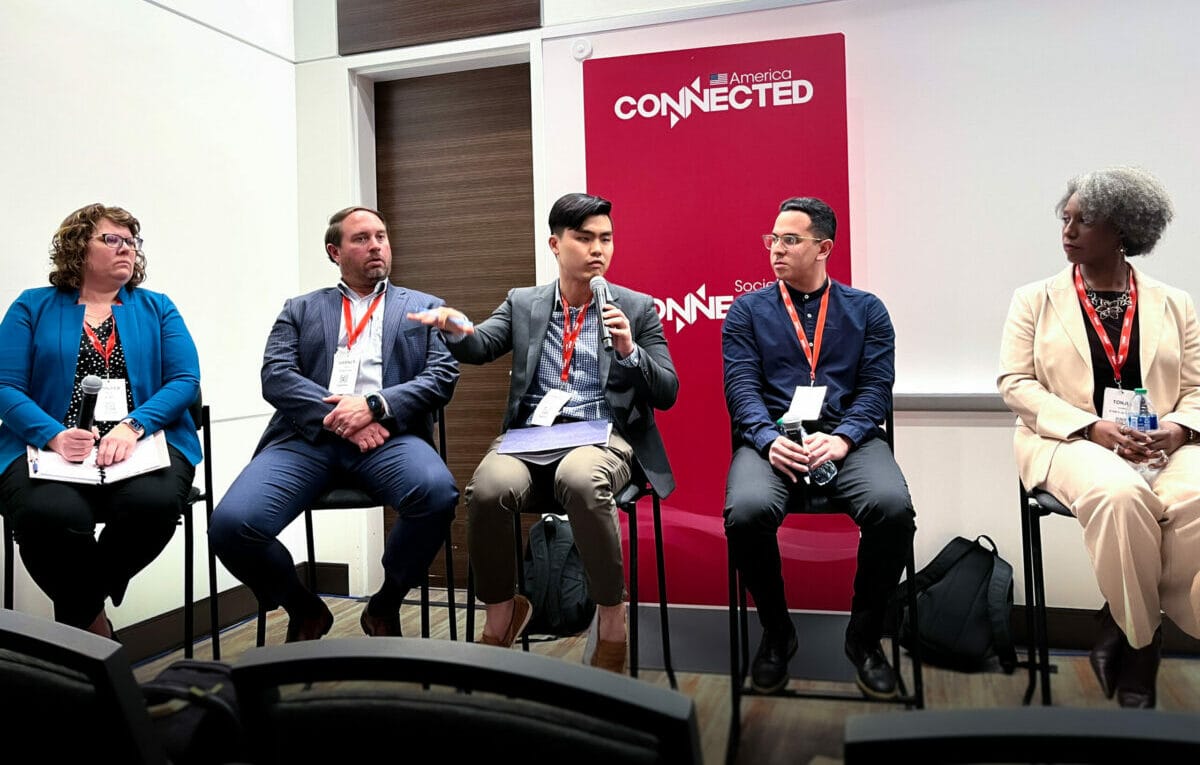Digital Learning is Here to Stay, Necessitating Multi-Sector Collaboration: Connected America Conference
The pandemic heightened the urgency of closing the digital divide, but several barriers remain.
Em McPhie

DALLAS, March 29, 2023 — As technology continues to play a growing role in education, successful efforts at closing the digital divide will require collaboration between schools, government agencies, community organizations and the private sector, according to industry experts at the Connected America conference on Tuesday.
Lack of digital access has short-term impacts on students’ grades and test scores, as well as compounding long-term effects on their ability to succeed in the workforce — and these impacts are particularly significant for students of color, explained Ji Soo Song, digital equity advisor for the U.S. Department of Education.
The pandemic left millions of students struggling to participate in remote classes, heightening the urgency of closing the digital divide.
“In Texas alone, it was 34 percent of students that did not have full internet access,” said Tonjia Grimble, founder and CEO of STEM It Up Sports. “That’s about 1.8 million students.”
Although schools have largely returned to in-person learning, the pandemic “opened a door that can’t be closed again” in terms of technology’s role in education, said Jennifer Berkner, education lead strategist at AT&T’s FirstNet.
This shift enables a new realm of learning opportunities, but it also presents challenges for both students and educators, panelists agreed.
“Affordability is still the main barrier to access,” said Francisco Gallegos, digital inclusion program manager for the Dallas Innovation Alliance.
For some schools, their actual physical infrastructure poses a problem. “You have schools that are built in concrete — you can’t get service through concrete,” Grimble said. “If their structure itself is not sound, then they’re not going to be able to get what you’re trying to get them… More of our states need to start thinking about improving that infrastructure.”
Song pointed to a September 2022 report, stemming from the Department of Education’s Digital Equity Education Roundtables initiative, that detailed existing barriers and potential solutions for increasing digital access. Among other recommendations, the report advised that community leaders should develop public trust by partnering with a broad range of local entities, including educational institutions, internet service providers, nonprofit organizations and more.
“The education sector needs to be in collaboration with the broadband sector as the digital equity plans are developed, because we can’t have siloed solutions,” Song said. Many states have already announced opportunities for community members to contribute to the digital equity planning process, he added.
In addition to the digital equity funding established by the Infrastructure Investment and Jobs Act, Song highlighted a variety of other government funding programs that can be layered to support digital learning. A “Dear Colleague” letter issued by the Office of Educational Technology in January provided guidance for maximizing this range of federal funding.
Private companies can also play a role in narrowing the digital divide, said Garner Duncan, vice president of sales for Ezee Fiber. Noting the longevity of fiber, Duncan advocated for service providers to focus on a longer-term return on investment in order to better support digital education infrastructure.
“We have returns that we have to make, but we need to be less rigid,” he said.










Member discussion